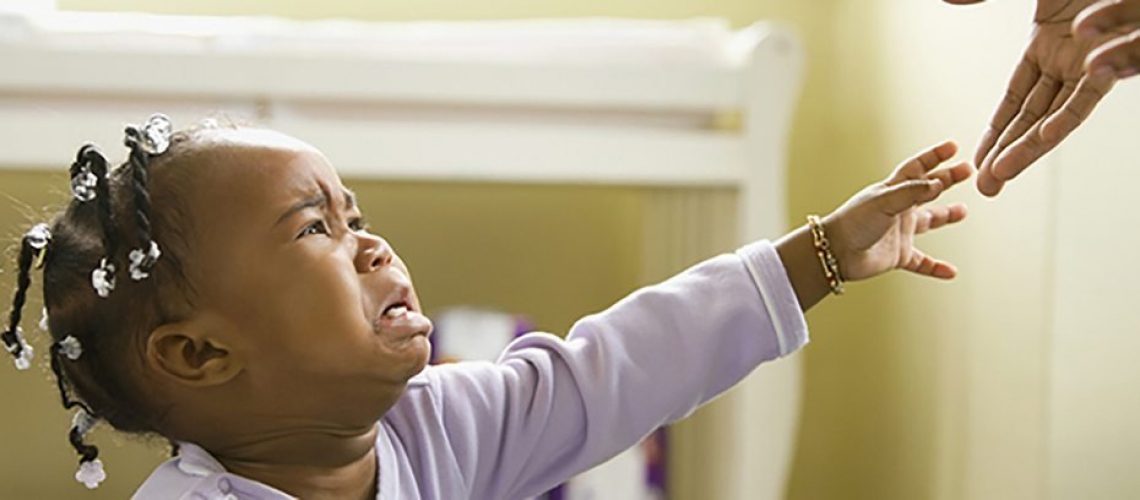By Magriet Rothman
At around 6 months of age, babies reach a big developmental milestone. They start to perceive relationships, and most importantly, the effect of distance. Babies start to realise that objects and people can come closer, and move further away, or even disappear around a corner or in the distance. This is a wonderful milestone that encourages babies to move by means of rolling, creeping and crawling. You will also start to realise at this stage that your baby is not happy with you putting him down and leaving him behind, because along with this milestone comes separation anxiety.
The severity and effect of separation anxiety in babies differs from child to child. It also comes and goes from 6 months until late toddlerhood. Separation anxiety can last between 2 and 3 weeks at a time and has an effect on your child’s mood and behaviour, as well as their sleep.
Whether or not your baby has been sleep trained, your baby might start screaming the second you put him or her in their cot and leave the room at this age. At first this might give you a big fright and cause confusion. Here are some tips on how to deal with your baby’s anxiety:
- Practise separation during the day: From playing peek-a-boo and hide-and-seek, to leaving your child with a trusted caregiver. Practise going away and coming back. Practise reassurance.
- Don’t let your child get over-tired: Children are more susceptible to separation anxiety when over-tired. Finding the optimal time to put your baby down for sleep might just make a big difference.
- Have a fixed routine: Routine is predictable and it makes a baby feel safe. During a phase of separation anxiety, stick to your routine and your child will know exactly what to expect. Your child knows that after a nappy change and story in the room, he will sleep, and when he wakes up, you will return.
- Comfort items: A comfort item is familiar, and is your child’s sleep buddy. It comforts and provides feelings of control and safety at sleep time.
- Don’t feed the anxiety: Do not make a big fuss about leaving your child; stay calm. Treat the situation like every other day. Children feed off our energy, and if the caregiver gets nervous about leaving the child, the child will definitely feel anxious.
The fact that your baby is learning that you are able to move away from him, makes it is a great time to sleep train as they understand what is happening and will be able to learn from it. To teach him or her that they are still okay even if you are not in the room is a way to not feed the anxiety, but to help your baby get used to these feelings for short periods of time.
To conclude, if you find that you and your baby are in a phase of separation anxiety, give your baby extra cuddles during bedtime and follow your normal routine. If your baby starts crying in their cot, give him or her some time to work it out for themselves. Do regular checks on your baby for extra reassurance but let your child fall asleep independently as usual.
Resources:
https://www.babysleepsite.com/baby-sleep-patterns/wonder-weeks-chart-baby-toddler-sleep/
https://www.nhs.uk/conditions/pregnancy-and-baby/separation-anxiety/
https://www.nanit.com/blog/separation-anxiety-need-know/
#sleeptraining

